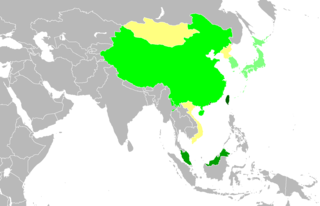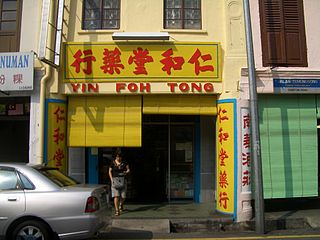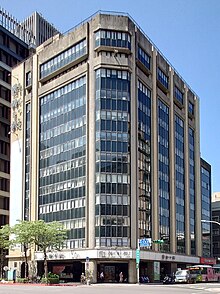
Chinese is a group of languages spoken natively by the ethnic Han Chinese majority and many minority ethnic groups in Greater China. About 1.3 billion people speak a variety of Chinese as their first language.
Wade–Giles is a romanization system for Mandarin Chinese. It developed from a system produced by Thomas Francis Wade, during the mid-19th century, and was given completed form with Herbert A. Giles's Chinese–English Dictionary of 1892.
Mandarin Phonetic Symbols II, abbreviated MPS II, is a romanization system formerly used in the Republic of China (Taiwan). It was created to replace the complex tonal-spelling Gwoyeu Romatzyh, and to co-exist with the popular Wade–Giles (romanization) and Zhuyin (non-romanization). It is sometimes referred to as Gwoyeu Romatzyh 2 or GR2.

Traditional Chinese characters are one type of standard Chinese character sets of the contemporary written Chinese. The traditional characters had taken shapes since the clerical change and mostly remained in the same structure they took at the introduction of the regular script in the 2nd century. Over the following centuries, traditional characters were regarded as the standard form of printed Chinese characters or literary Chinese throughout the Sinosphere until the middle of the 20th century, before different script reforms initiated by countries using Chinese characters as a writing system.
Tongyong Pinyin was the official romanization of Mandarin in Taiwan between 2002 and 2008. The system was unofficially used between 2000 and 2002, when a new romanization system for Taiwan was being evaluated for adoption. Taiwan's Ministry of Education approved the system in 2002, but its use was optional.

Gwoyeu Romatzyh, abbreviated GR, is a system for writing Mandarin Chinese in the Latin alphabet. The system was conceived by Yuen Ren Chao and developed by a group of linguists including Chao and Lin Yutang from 1925 to 1926. Chao himself later published influential works in linguistics using GR. In addition a small number of other textbooks and dictionaries in GR were published in Hong Kong and overseas from 1942 to 2000.
Simplified Cangjie, known as Quick or Sucheng is a stroke based keyboard input method based on the Cangjie IME (倉頡輸入法) but simplified with select lists. Unlike full Cangjie, the user enters only the first and last keystrokes used in the Cangjie system, and then chooses the desired character from a list of candidate Chinese characters that pops up. This method is popular in Taiwan and Hong Kong, the latter in particular.
The mass media in Taiwan is considered to be one of the freest and most competitive in Asia. Cable TV usage is high and there is also a wide selection of newspapers available covering most political viewpoints.

Taiwanese Mandarin, Guoyu and colloquially as Huayu refers to Mandarin Chinese spoken in Taiwan. A large majority of the Taiwanese population is fluent in Mandarin, though many also speak a variety of Min Chinese known as Taiwanese Hokkien, commonly called Minnanyu, Southern Min, Taigi or Hokkien. This language has had a significant influence on Mandarin as spoken on the island.

The languages of Taiwan consist of several varieties of languages under the families of Austronesian languages and Sino-Tibetan languages. The Formosan languages, a branch of Austronesian languages, have been spoken by the Taiwanese indigenous peoples for thousands of years. Owing to the wide internal variety of the Formosan languages, research on historical linguistics recognizes Taiwan as the Urheimat (homeland) of the whole Austronesian languages family. In the last 400 years, several waves of Han emigrations brought several different Sinitic languages into Taiwan. These languages include Taiwanese Hokkien, Hakka, and Mandarin, which have become the major languages spoken in present-day Taiwan.

Romanization of Chinese is the use of the Latin alphabet to transliterate Chinese. Chinese uses a logographic script and its characters do not represent phonemes directly. There have been many systems using Roman characters to represent Chinese throughout history. Linguist Daniel Kane wrote, "It used to be said that sinologists had to be like musicians, who might compose in one key and readily transcribe into other keys." The dominant international standard for Standard Mandarin since about 1982 has been Hanyu Pinyin, invented by a group of Chinese linguists, including Zhou Youguang, in the 1950s. Other well-known systems include Wade–Giles (Mandarin) and Yale romanization.
This comparison of Standard Mandarin transcription systems comprises a list of all syllables which are considered phonemically distinguishable within Standard Mandarin.
There are many romanization systems used in Taiwan. The first Chinese language romanization system in Taiwan, Pe̍h-ōe-jī, was developed for Taiwanese by Presbyterian missionaries and promoted by the indigenous Presbyterian Churches since the 19th century. Pe̍h-ōe-jī is also the first written system of Taiwanese Hokkien; a similar system for Hakka was also developed at that time. During the period of Japanese rule, the promotion of roman writing systems was suppressed under the Dōka and Kōminka policy. After World War II, Taiwan was handed over from Japan to China in 1945. The romanization of Mandarin Chinese was also introduced to Taiwan as official or semi-official standard.

The Chinese Television System Inc. is a terrestrial television station in Taiwan and was founded in 1971. Recent milestones of the network are in sports events, including having the distinction to offer exclusive coverage of the 2017 Universiade, which was held in Taipei. This included airing the opening and closing ceremonies, plus major games, and it enabled its YouTube channel with several options to watch the rest of the games. Due to recent interest in soccer in Taiwan triggered by the success of its national team, it also bought the rights to broadcast on its free-to-air waves the 2018 FIFA World Cup for all matches from the round of 16 to the end of the tournament, thereby becoming the only channel which offered an event often reserved to cable TV channels.
Bopomofo, or Mandarin Phonetic Symbols, also named Zhuyin, is a Chinese transliteration and writing system for Mandarin Chinese and other related languages and dialects. More commonly used in Taiwanese Mandarin, it may also be used to transcribe other varieties of Chinese, particularly other varieties of Mandarin Chinese dialects, as well as Taiwanese Hokkien. Consisting of 37 characters and five tone marks, it transcribes all possible sounds in Mandarin.

The different varieties of Chinese have been transcribed into many other writing systems.
Mandarin Chinese is the primary formal Chinese language taught academically to Chinese Filipinos in Chinese Filipino schools and across other schools and institutions in the Philippines, especially as the formal written Chinese language.

Taiwanese Braille is the braille script used in Taiwan for Taiwanese Mandarin (Guoyu). Although based marginally on international braille, most consonants have been reassigned; also, like Chinese Braille, Taiwanese Braille is a semi-syllabary.
The Yale romanization of Mandarin is a system for transcribing the sounds of Standard Chinese, based on Mandarin Chinese varieties spoken in and around Beijing. It was devised in 1943 by the Yale sinologist George Kennedy for a course teaching Chinese to American soldiers, and was popularized by continued development of that course at Yale. The system approximated Chinese sounds using English spelling conventions, in order to accelerate acquisition of correct pronunciation by English speakers.










